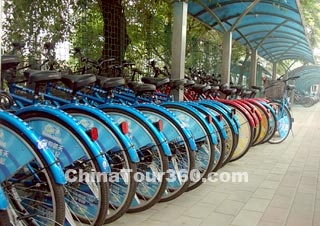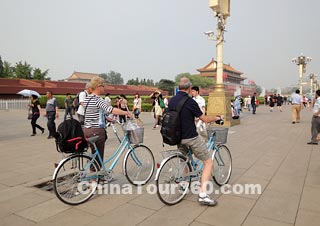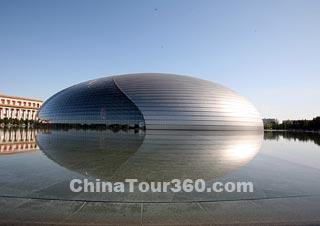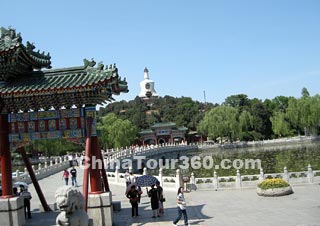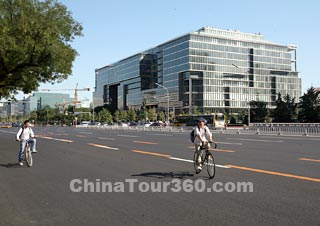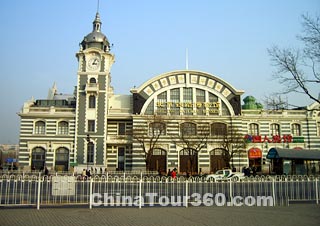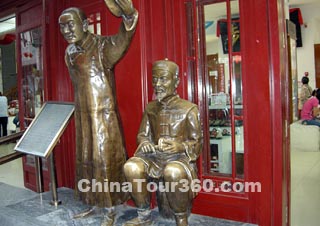Beijing Bike Tour
"Biking around Tiananmen Square"
- Code: BK01
No matter as a sport or a hobby, biking is becoming more and more popular. During biking, you can fully exercise your body, enjoy the wonderful views along the road, and decompress yourself from the busy daily work.
The most featured bike tour in Beijing is to circle around Tiananmen Square and the Forbidden City. The road conditions are good and you can travel with any kinds of bicycles.
|
|
We will start the tour from Tiananmen Gate, which is located in the city center. Firstly built in 1417, it had been destroyed by fire and war for a couple of times. The one we see today was rebuilt in 1651 and the founding ceremony of People's Republic of China was held here in 1949. Tiananmen is considered as the symbol of China ever since and you can find it on our national emblem. Zhongshan Park is to the west of Tiananmen and Beijing Working People's Cultural Palace is to its east. Both parks are original historical sites and have memorial significance. If you have time, you may take a visit.
Riding towards east on Chang'an Street about a third mile, you will reach Nanchizi Street. The street itself is a historical culture conservation block. It was a part of the Forbidden City in the old times and used as the storage for important goods and materials. From the names of some of the lanes, such as lane of silks and satins and lane of porcelains, you can tell what was stored here back then. The layout of 31 courtyards still keeps the style of the Qing Dynasty and there are many historical sites hidden in the lanes.
Heading north along Nanchizi Street to Beichizi Street, and after a 1.5 km's riding, you will see the famous turret standing at the northeast corner of the Forbidden City Wall. Besides the graceful appearance, an amazing fact of this building is that it was built with no nails. All the wooden parts were conjoined by locking into each other which was quite a skill in 1420.
Turn west to Jingshanqian Street and not far from the turret is the backdoor of the palace, Shenwu Gate. This was the entrance and exit of the empresses and imperial concubines in the old times. Opposite to it is Jingshan Park, the imperial park in the Yuan, Ming and Qing dynasties. In 1644, the last emperor of the Ming Dynasty, Chongzhen, hanged himself on an old Chinese scholar tree in Jingshan Park and his death marked the end of Ming. On the top of the hills in the park, you can obtain a panoramic view of the magnificent Forbidden City. To the west of Jingshan Park locates Beihai Park which is the oldest and most well-preserved imperial garden. It was built in the Liao Dynasty which was over a thousand years ago and had been renovated and extended continuously to the present dimensions.
|
|
The distance from the northeast corner to the northwest corner of the Forbidden City is 753 meters. At the end of Jingshanqian Street, the huge lake is divided into two parts, Beihai (North Sea) and Zhonghai (Middle Sea) by Beihai Bridge facing south. The palatial Ancient Books Museum of the National Library is on the other side of the bridge. It was originated from Beiping Library which was founded in 1931. At that time, the library was equipped with the most advanced western facilities and equipments and could be compared with the Library of Congress. The collected books there are plentiful and precious and many of them are the only existing copies.
Turning south to Fuyou Street and riding with the old residence on your right and Zhonghai and Nanhai (South Sea) on your left, soon you will again reach Chang'an Street. When heading east, you will find Xinhua Gate on the north side of the street. Inside is our nation's political center Zhongnanhai, where the Central Committee of the Communist Party of China and China's State Council are located. You can not go in, but you can take photos outside the gate.
The National Grand Theater, also known as the National Center for the Performing Arts, is on the south side of the street which is a little further than Zhongnanhai. This egg-shaped theater was designed by a French architect named Paul Andrew and finished constructing in 2007. Because the building is floating on the artificial lake, the audiences need to go through an 80 meters underwater tunnel to enter the performing hall.
Continue your bike tour and going east to Tiananmen Square, now it is time to appreciate the buildings around. On the west side of the square is the first one we will visit, the Great Hall of the People. In 1958, to celebrate the 10 years anniversary of new China and to show our achievements on architecture, Chinese engineers and technicians had spent only 10 months on its design, construction and decoration and finished building in Sep 1959.
|
|
Opposite to the Great Hall of the People, it is the National Museum on the other side of the square. It was also built in 1959 and opened on Oct 1st of the same year. The museum is closed on Monday. You can visit it with your valid passport or ID card on other days from 09:00 to 17:00 for free.
In the center of the square stands the Monument to the People's Heroes. It was built in 1958 with a height of 37.94 meters. Ten relievos express the scenes of some important events in Chinese history. The inscription on the monument saying People's Heroes Are Immortal was written by Chairmen Mao Zedong.
Chairman Mao Zedong Memorial Hall is on the south part of the square and its first floor is open to the public. There is a white marble status of Chairman Mao and a tapestry of China's magnificent mountains and rivers in the north hall. The Mourning Hall is located in the center of the memorial hall. Chairman Mao's relique has been kept in a crystal coffin wearing his gray suit and draping with a red flag of the Communist Party.
At the south end of Tiananmen Square is Zhengyang Gate, also known as the famous Qianmen. When there were still city walls in the old times, Zhengyang Gate Tower and the Watch Tower which is across the street to its south are a set of bulwark. After several civil wars in 500 hundred years, most part of it were burnt down or demolished.
|
|
At the east side of the Watch Tower, there is Zhengyangmen Railway Station. This Chinese-western style building was constructed in 1906 by British and was the biggest one at the time. It was stopped using only in 1959 after the new Beijing Railway Station came into service. Now it is changed to Beijing Railway Museum, but is not open to the public.
The famed Qianmen Street is just to the south of the Watch Tower. It is a pedestrian street, so you can not ride your bicycle there. But it is really worth a short tour. The history of this street can trace back to 1550 and it was always an important commercial district. Many old and honored brands originated at this place, such as Quanjude Roast Duck, Yongantang Pharmacy, Black Monkey Hat Shop, Tongrentang Pharmacy, Liubiju Pickles and Ruifuxiang Silk Store. Now the buildings along the street are all ancient styles and you can experience the streetcar when visiting. From the first cross to the west is the well-know Dashilan Hutong. You can spend the rest of the day visiting here, window shopping, eating and relaxing.



